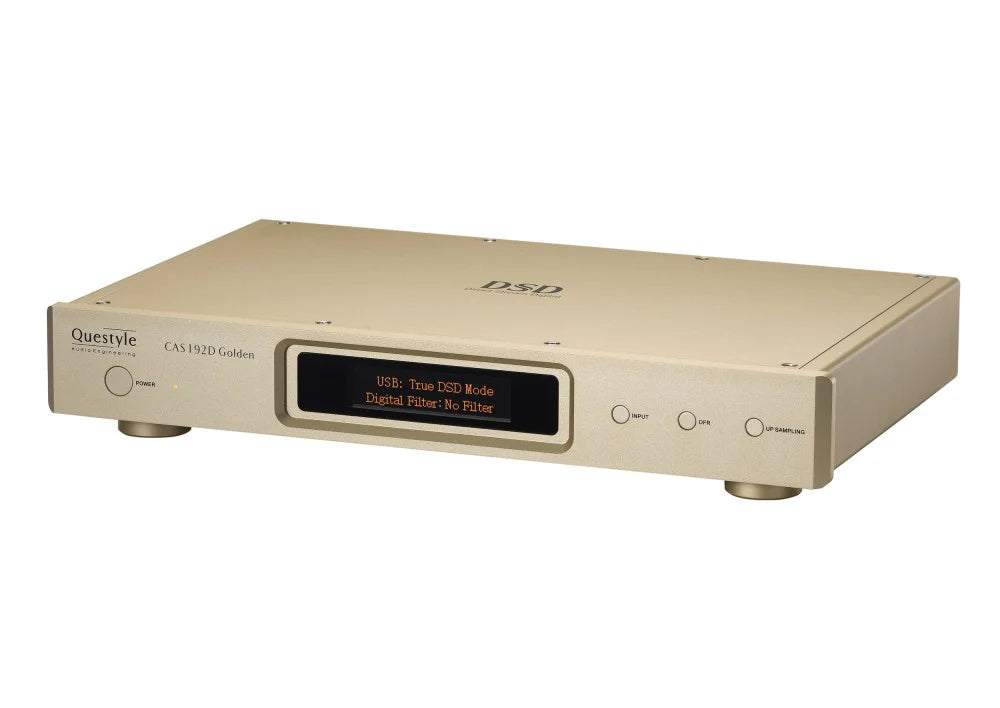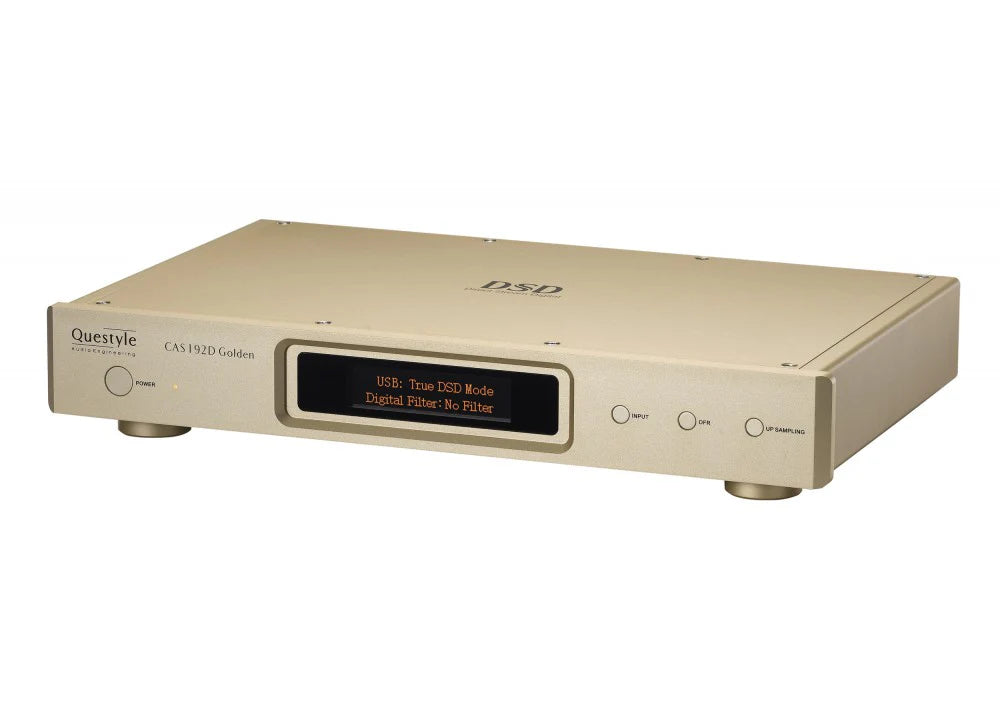Hi-Fi Disposals
Questyle CAS192D Silver Digital to Analogue Converter
Questyle CAS192D Silver Digital to Analogue Converter
Call us on 03 9882 0372 for more information or simply checkout online. Items covered under the HiFi Disposals warranty are serviced and guaranteed by Tivoli Hi-Fi.
Couldn't load pickup availability
A fantastic combination of sound and digital technology!
True DSD
Unlike other DACs that claim DSD support yet actually provide DoP (DSD over PCM), the Questyle Audio CAS192D accepts the DSD bitstream directly from your computer, bypassing your computer’s audio processing and digital volume control as well as the Questyle Audio CAS192D’s digital filters to provide True DSD, the way it was meant to be heard.
The Questyle Audio CAS192D achieves this without requiring expensive, difficult to install, proprietary connectors, or as is the case with DoP, breaking up the bit-stream into 16bit packets and compressing them into a PCM data-stream and then uncompressing them at the other end, buffering them, then reassembling the bit-stream so that it may be sent to the DAC as DSD. All of this requires an extreme amount of processing, at both the computer end and the DAC end, to perform in real time (which invariably leads to latency, data loss, etc), not to mention a 33% increase in bandwidth requirements for the USB ports and cabling.
IIR Digital Filter
Currently, most DACs use FIR (finite impulse response) digital filters. However, research and testing have shown that our ears are susceptible to the pre-ring that FIR digital filters add to the impulse wave, making the music sound incoherent and unnatural.
The Questyle Audio CAS192D offers the more advanced IIR digital filter, eliminating the impulse wave's pre-ring and producing a more natural sound.
USB input supports True DSD and PCM 192kHz/24bit, with 3x clock asynchronous transmission structure
During every second of music, hundreds of thousands of time operations occur. Any micro errors will distort the sound.
In the Questyle Audio CAS192D, a 3x clock USB asynchronous transmission structure ensures a more accurate operation. To obtain first class sound performance, three corresponding level clocks (custom made in Japan), individually control multiples of 44.1kHz, 48kHz and USB signal transmission, dedicated to USB asynchronous transmission, reducing jitter to undetectable levels. A three-clock circuit is integrated with FIFO asynchronous architecture and three voltage-stabilised power stages, to ensure accurate sound.
Dual clock integral up-sampling
When up-sampling, 44.1kHz does not divide evenly into 192kHz, causing timing errors. To avoid this, the CAS192D uses two clocks, with extremely low phase noise, thus the processor automatically identifies the sample rate and up-samples integrally. If the input data is 44.1kHz, it will be multiplied by 4 to 176.4kHz; if the input data is 48k, it will be multiplied by 4 to 192k, which avoids those negative effects. The up-sampling is ASRC to avoid jitter.
On the front panel of the Questyle Audio CAS192D, there is an UP-SAMPLING button to allow the user to choose whether to up-sample or decode at the original sample rate (the current state of operation is displayed on the screen).
Specific power supply
The Questyle Audio CAS192D's power supply section is second to none. A customised Plitron toroidal transformer, Schottky rectifier, 22pcs Nichicon 2200uF FG capacitors, and 22 groups of individual power regulators ensure each section has a stable and purified power supply. The DAC chipset uses 4 levels of digital filter and power regulation.
Sound Structure
Foxconn produces the Questyle Audio CAS192D aluminium chassis using precise CNC tooling machines. The upper cover and bottom chassis's “mutual bit” structural design provides stable heat, excellent control of sympathetic vibration, and excellent shielding of RFI/EMI radiation.
Wolfson Flagship Chip WM8741
The sound of WM8741 can be described as classic "English"-style, delivering a soft and exquisite sound. Due to Questyle's high requirements for D/A design, LPF is discarded (per Wolfson ’s suggestion) in the Questyle-developed analogue output circuit for the WM8741, receiving official praise from Wolfson.
Share


